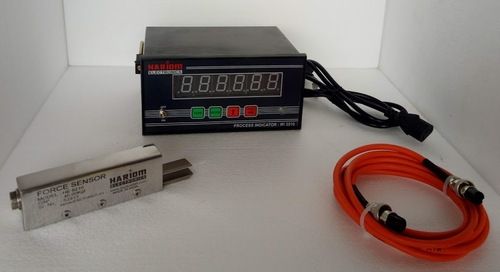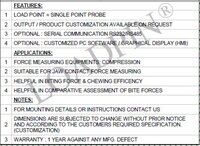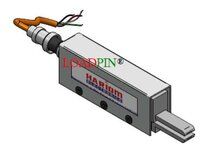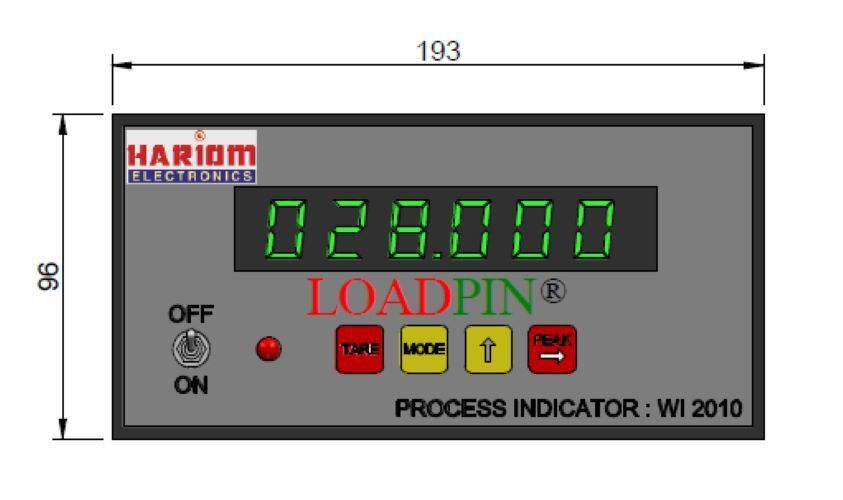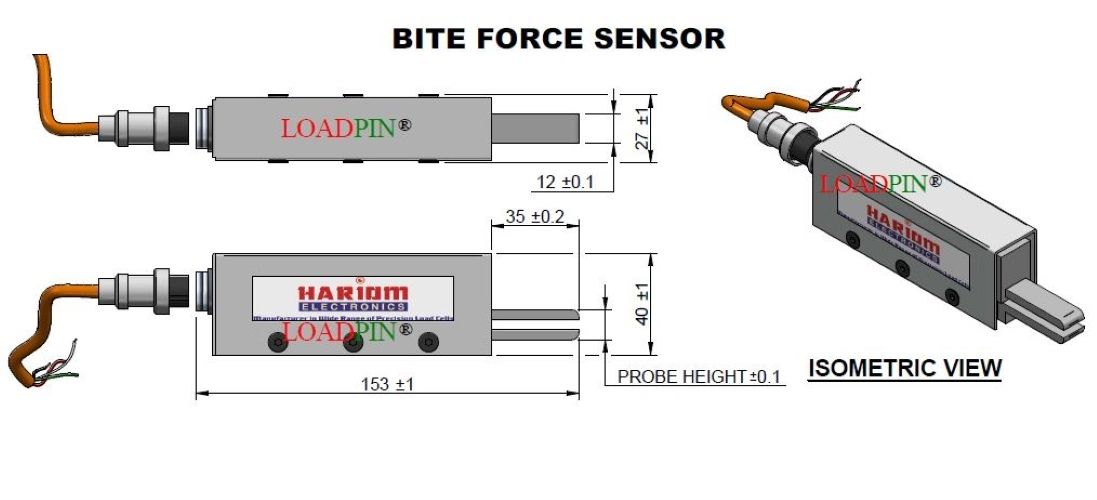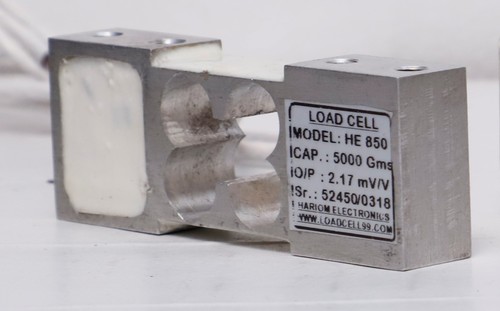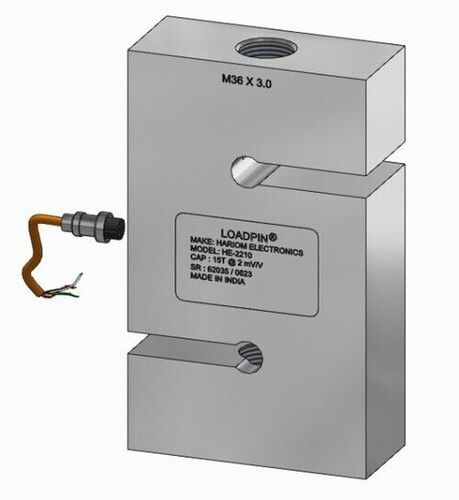Call Us : 08045803765
Bite Force Sensor
22450.00 INR/Pair
Product Details:
X
Bite Force Sensor Price And Quantity
- 1 Number
- 22450.00 INR/Pair
Bite Force Sensor Trade Information
- Vadodara Airport
- 50 Number Per Week
- 30 Days
- Contact us for information regarding our sample policy
- All India, Haryana, Madhya Pradesh, Odisha, Telangana, Mizoram, Himachal Pradesh, Assam, Rajasthan, Andhra Pradesh, Gujarat, Chhattisgarh, Manipur, Uttar Pradesh, Pondicherry, West India, Dadra and Nagar Haveli, Meghalaya, Karnataka, Delhi, Jharkhand, North India, Chandigarh, East India, Bihar, Tamil Nadu, Arunachal Pradesh, Uttarakhand, Punjab, Andaman and Nicobar Islands, West Bengal, Tripura, Central India, Lakshadweep, Goa, Sikkim, Maharashtra, Nagaland, Jammu and Kashmir, South India, Kerala, Daman and Diu
Product Description
Key Features:
- Greater flexibility
- Superior linearity and accuracy
- Optional sensing area sizes
- High temperature force measurement
Specification
|
Usage/Application |
BITE FORCE SENSOR |
|
Type of Dental Equipment |
CHECKING FORCE BETWEEN TWO TEETH |
|
Pack Type |
CORRUGATED BOX |
|
Application |
CHECKING FORCE BETWEEN TWO TEETH |
|
Material |
Stainless Steel |
|
Cable Length |
3 meter |
Precision Measurement for Research
This sensor is tailored for demanding dental research, offering high accuracy and dependable digital output. Its robust build from alloy tool steel and stainless steel withstands repeated use, making it a trusted tool for practitioners and academic researchers seeking detailed bite force analysis.
Practical Application in Dentistry
Designed to meet the needs of the dental community, this sensor excels in research applications, enabling detailed studies of bite dynamics. Operating within optimal temperature ranges, it remains stable in various clinical conditions, thereby enhancing the quality of data collection for innovative dental insights.
FAQs of Bite Force Sensor:
Q: How does the bite force sensor benefit dental practitioners and researchers?
A: The bite force sensor provides accurate and reliable measurements of bite force, essential for diagnostics, treatment planning, and research in dentistry. Its digital output ensures easy data interpretation, aiding practitioners and researchers in obtaining precise results for their studies and patient assessments.Q: What is the recommended operating environment for this sensor?
A: The sensor should be operated within a temperature range of 5 to 45 degrees Celsius and stored under the same conditions. For optimal accuracy, it also compensates temperatures between 0 and 50 degrees Celsius, making it suitable for most clinical and laboratory settings.Q: Where is this bite force sensor typically used?
A: This sensor is commonly utilized in dental clinics, research laboratories, and academic institutions, particularly for dental research and innovative studies regarding bite dynamics and patient diagnostics.Q: What materials are used in the construction of the sensor?
A: The sensor is built from high-quality alloy tool steel and stainless steel with a silver finish, ensuring durability, corrosion resistance, and consistent performance in medical environments.Q: How is the bite force sensor powered, and what is its operating voltage?
A: The sensor operates using a 5 VDC voltage supply, making it compatible with standard digital devices commonly found in research and clinical setups.Q: What makes this sensor accurate and reliable for medical and research use?
A: Its advanced design provides an accuracy of 0.05%, allowing detailed and reliable measurement of bite forces which are pivotal in both patient diagnostics and scientific research. The stable digital output reduces interpretation errors and streamlines data analysis.Tell us about your requirement

Price:
Quantity
Select Unit
- 50
- 100
- 200
- 250
- 500
- 1000+
Additional detail
Mobile number
Email

